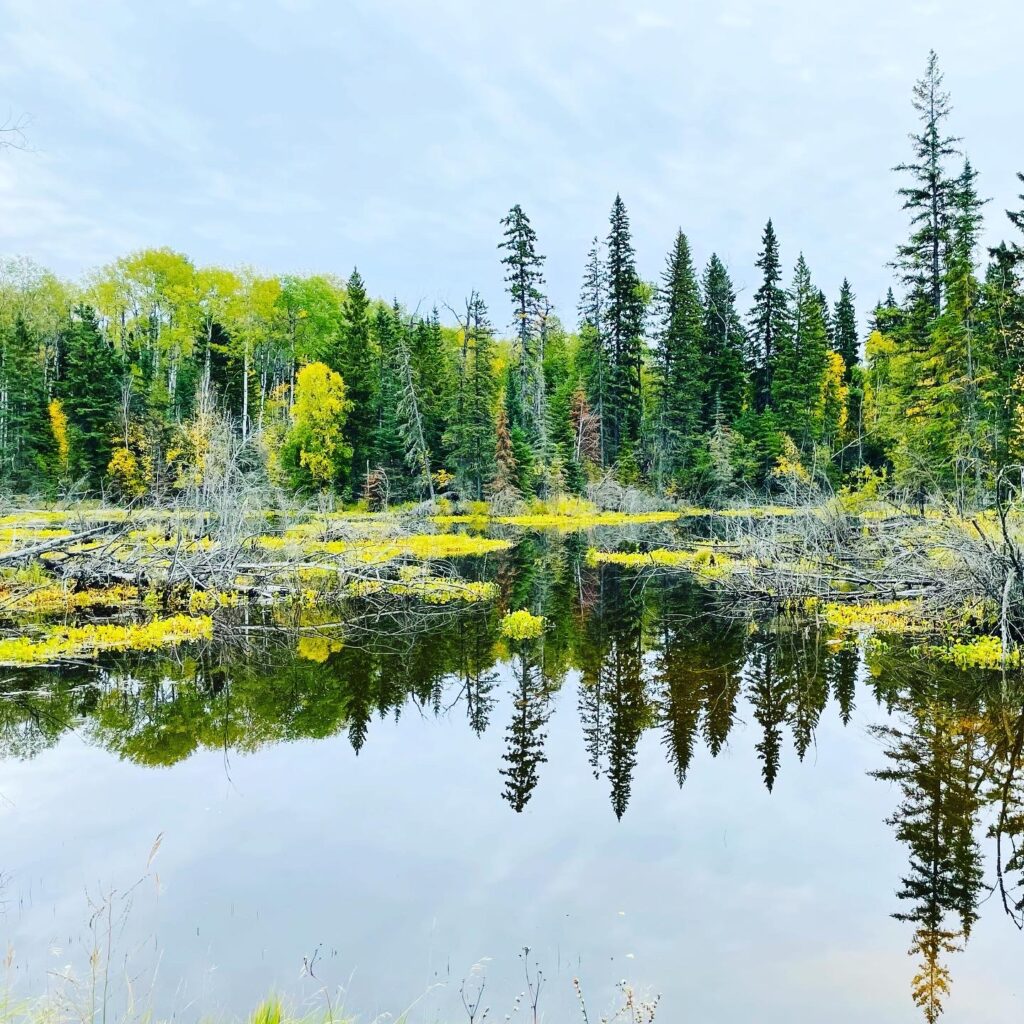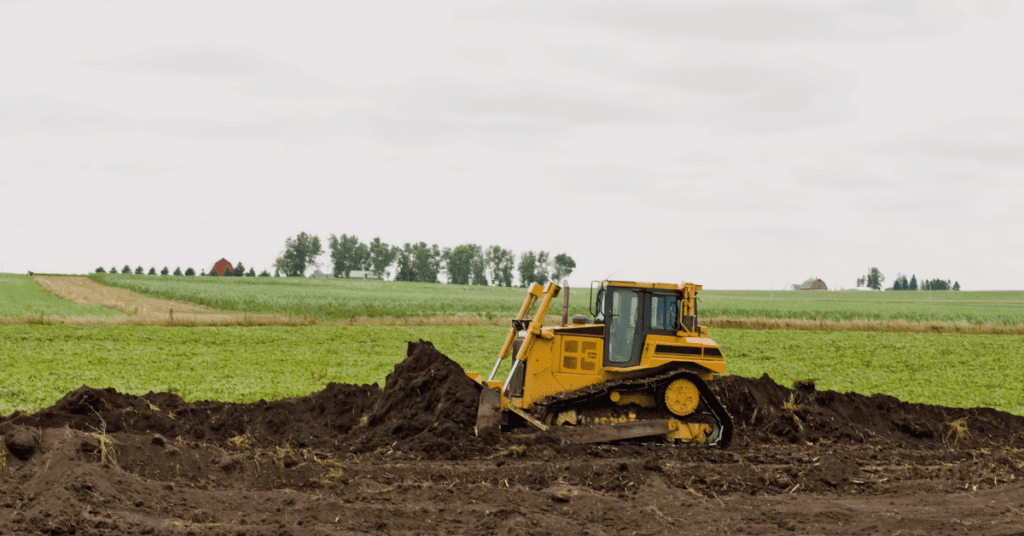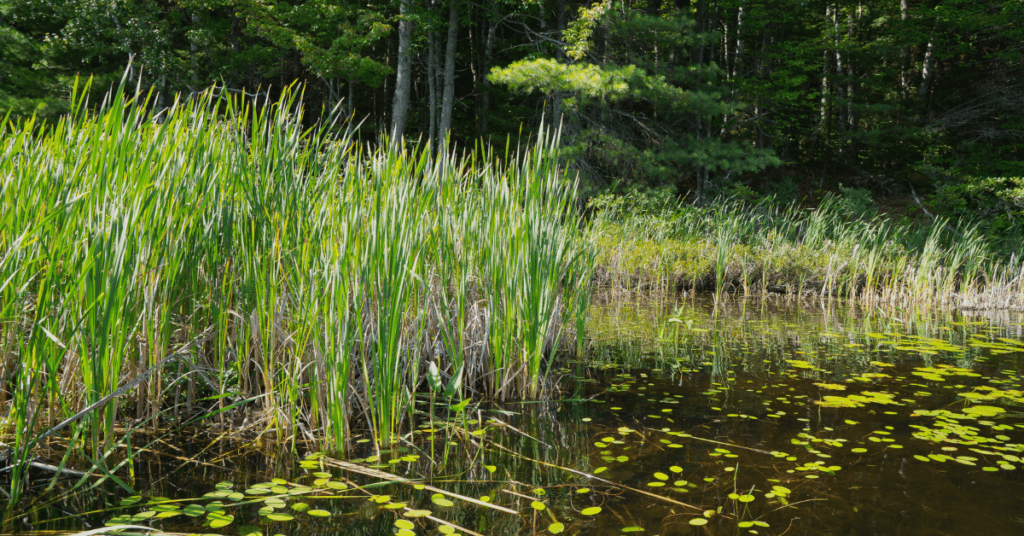This blog was updated on November 16, 2022 to reflect changes in provincial policy
Ontario’s wetlands, which comprise swamps, marshes, bogs and fens, play an important role in protecting biodiversity (the mix of plants and animals in nature) and providing ecological services across the province. Unfortunately, Southern Ontario has lost most of its wetlands, and many of the remaining ones are under serious threat from development and new government proposals to make it easier to destroy wetlands.
TAKE ACTION: SAVE OUR WETLANDS – STOP BILL 23
Benefits from wetlands are diverse and numerous. They include:
- soil stabilization
- flood mitigation
- vital wildlife habitat
- water quality improvement
- recreational opportunities
When wetlands are protected, so are these important services that they provide. Wetlands will play an ever more important role in protecting human health and property as the impacts of climate change accelerate.
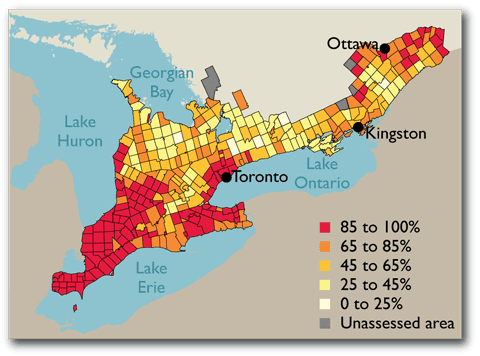 Estimates suggest that 68 per cent of the wetlands originally present in southern Ontario were lost by the early 1980s. An additional 4 per cent has been lost since this time (Ontario Biodiversity Council, 2010). In some areas of southern Ontario, such as the Greater Toronto Area and the agricultural southwest, over 85 per cent of wetlands have been lost.
Estimates suggest that 68 per cent of the wetlands originally present in southern Ontario were lost by the early 1980s. An additional 4 per cent has been lost since this time (Ontario Biodiversity Council, 2010). In some areas of southern Ontario, such as the Greater Toronto Area and the agricultural southwest, over 85 per cent of wetlands have been lost.
Great Lakes Coastal wetlands are a subset of Ontario’s wetlands. They contain a large variety of animal and plant species. This includes some species that are rare, threatened, or even endangered. This biodiversity helps drive the Great Lakes food web, with up to one-third of primary food for other animals in the ecosystem originating in coastal wetlands.
More than 80 species of fish rely directly on coastal wetland habitat at some point in their life cycle and over 50 species are solely dependent on coastal wetlands for the entirety of their life cycle. Many fishes such as Northern Pike, Yellow Perch and Bowfin spawn in coastal wetlands; others such as Walleye rely on coastal wetlands to provide nursery habitats. Other species, including federally endangered or threatened species such as the piping plover, dwarf lake Iris, Karner blue butterfly, and the Blanding’s turtle use Great Lakes coastal wetlands for resting, feeding, and nesting habitat.
 What are the main threats to wetlands?
What are the main threats to wetlands?
Development of natural areas is the primary cause of wetland loss in southern Ontario. This occurs as a result of expanding residential and commercial development around cities and towns, as well as the result of wetland drainage for the expansion of agriculture. Great Lakes Coastal wetlands are particularly threatened: it is estimated that 50 per cent have been lost basin-wide and up to 90 per cent in some areas.
This loss is particularly acute near larger towns and cities. For example, Toronto filled in and developed all of the coastal wetland at the mouth of the Don River in the 19th and early 20th centuries. The city is now spending billions of dollars to partially restore their extent and functions.
 How are wetlands protected?
How are wetlands protected?
Ontario’s municipal planning rules require that all Provincially Significant Wetlands be placed off limits from being damaged by new developments. A Provincially Significant Wetland is one that has high biological, social, hydrological and special feature components, and has been designated as significant by the Ministry of Natural Resources and Forestry. Town, City and Regional governments are required to ensure that new development does not occur in a wetland and that proposed developments nearby are not impacting the function of the wetland.
Conservation Authorities also are involved in looking after wetlands. They comment on and issue permits for developments that are proposed near or in wetlands that are not provincially protected. Their staff of biologists, hydrologists and ecologists are well trained in properly assessing whether a new subdivision, factory or office is too close to a wetland or is going to impact the water that flows to or from it.
Starting in 2014, the Ontario government reviewed their wetland conservation efforts. In 2017 the Ministry of Natural Resources and Forestry (MNRF) released, A Wetland Conservation Strategy for Ontario 2017-2030. The Strategy provides a framework to guide wetland conservation across the province and should be serving as a launching point for new, innovative conservation commitments and actions that can protect Ontario’s wetlands. The Strategy’s overall targets are to halt net loss of wetland area and function in southern Ontario by 2025 and by 2030 to have achieved an overall net gain in wetland area.
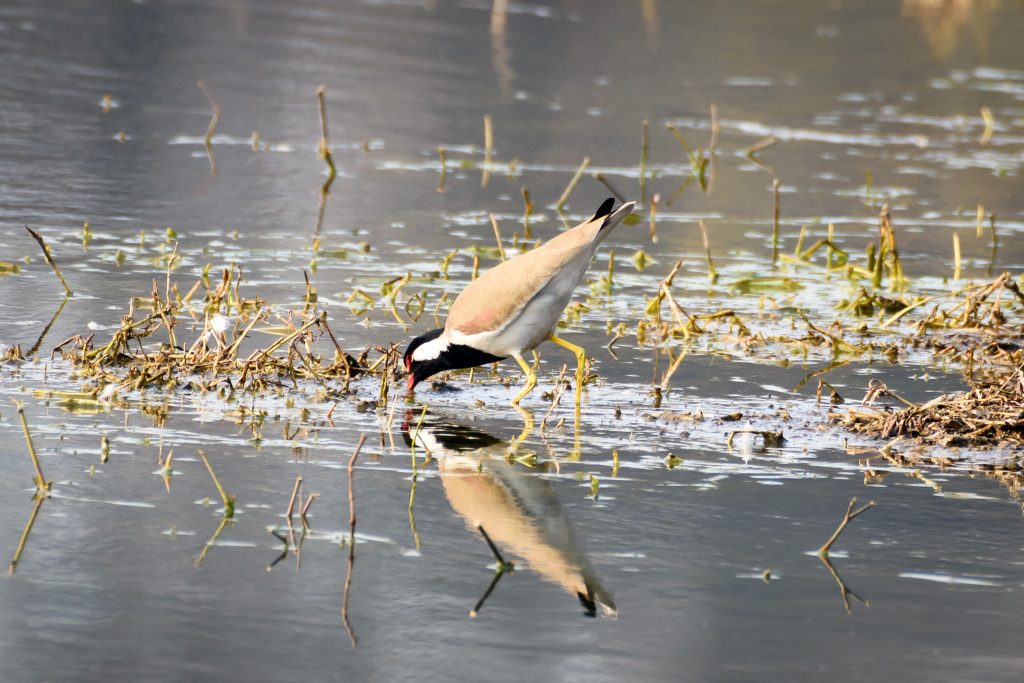
Why are wetlands more threatened now?
However, despite this new strategy, the development, aggregate and some other industries have long resisted the protection of provincially significant wetlands, and have asked the province to allow more of them to be drained and developed. They have also advocated for “offsetting” programs that would mean when they want to destroy a wetland they could pay into a fund that would be used to try to create a wetland somewhere else or to pay for education programs that explain why wetlands are important.
Wildlife and other scientists have deep concerns about this proposed approach as it is difficult or impossible to recreate most wetlands. Moreover, these programs have not worked well in the U.S. when they have been tried. In addition, such programs establish a precedent that simply paying a fee is an adequate compensation for destroying key elements of ecosystems that cannot be replaced.
Recently the Ontario government has signalled that they have accepted the wishes of these industries and are moving to put in place new rules that would allow them to by-pass the protection of wetlands and create new “offset” regimes that would allow this “pay-to-slay” approach. They are also proposing this approach for some endangered species.
In addition, the Ontario government is proposing to rewrite the process by which wetlands are evaluated for their importance, and therefore their ability to be spared from destruction. The government is proposing that the presence of endangered species in a wetland no longer be considered a factor in determining how important a wetland is. This is ridiculous from an ecological perspective, because wetlands that contain the rarest of species should have the highest level of protection. The provincial government also proposes to no longer consider wetlands that are located close to one another as part of a “complex” and instead will allow them to be evaluated individually, as if the rest of the area did not exist.
As a result of all these changes many or most wetlands in southern Ontario will no longer be considered “provincially significant” and will be open to being destroyed. The Halton Conservation Authority has estimated 90 per cent to 95 per cent of their remaining wetlands will be open to development and Niagara Region estimates 80 per cent of theirs will be similarly vulnerable. Other Conservation Authorities are still completing their analysis, but it is likely the answers will be similarly shocking.
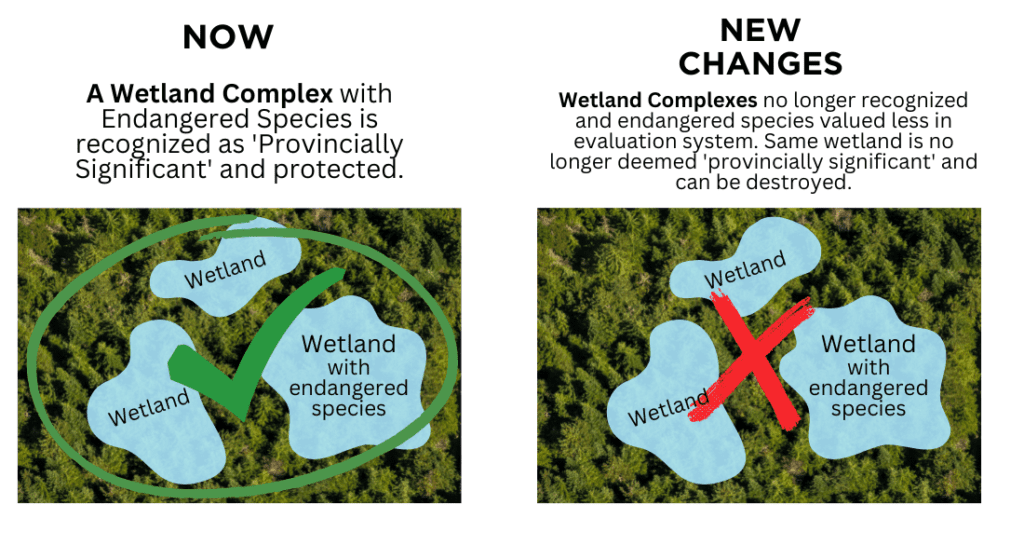
Environmental Defence and other organizations are working hard to fight these changes and will be arguing that protection and enhancement are the best way to manage our wetlands.
Stay informed about environmental issues. Join our email community today.



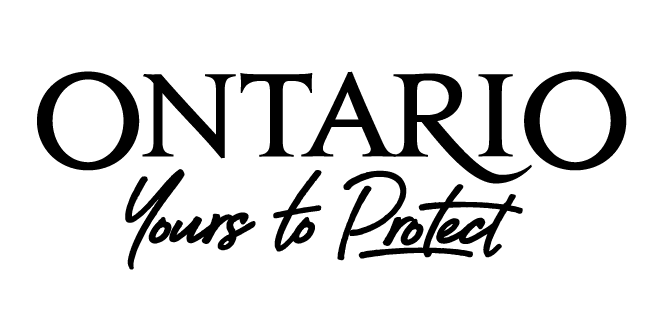
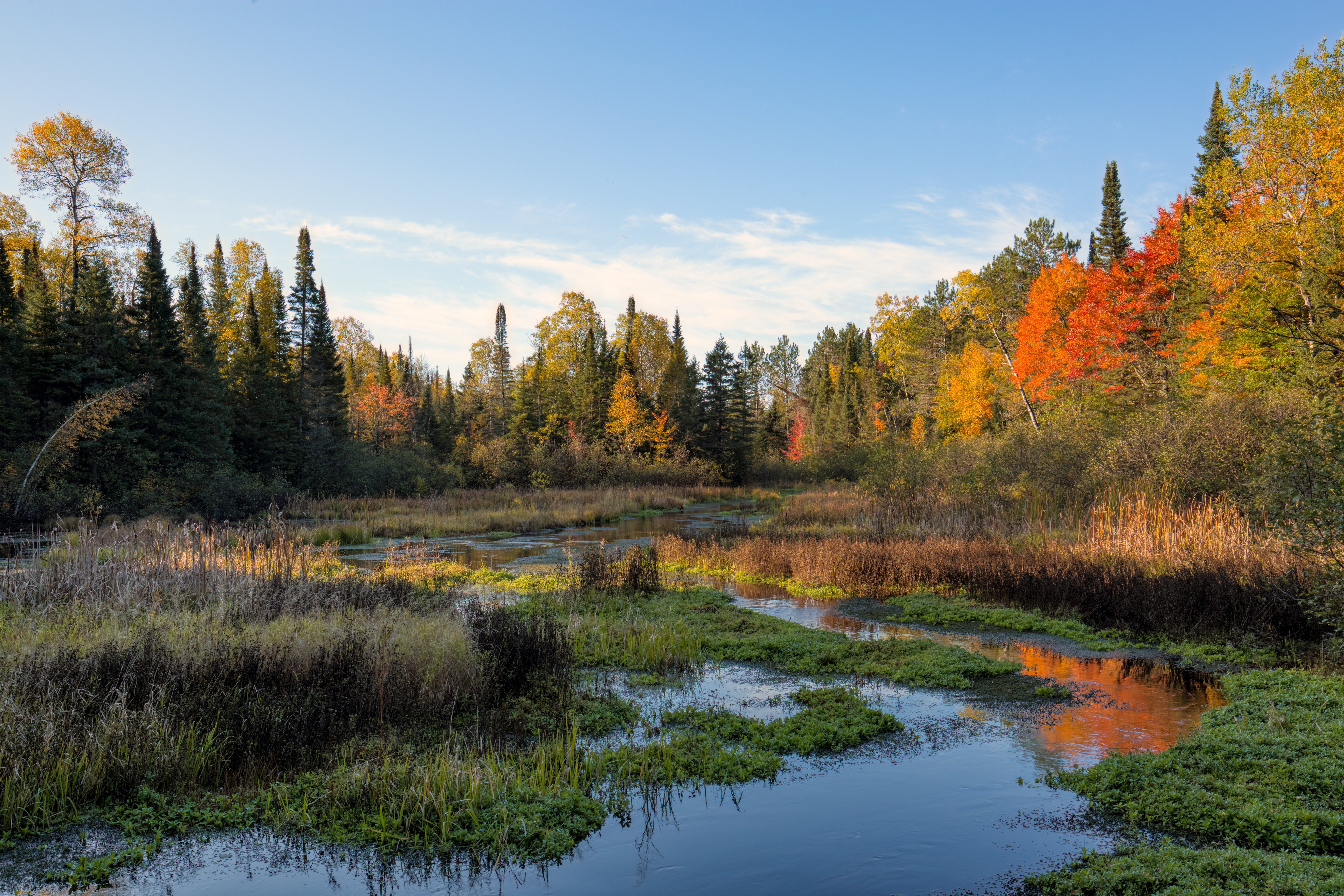

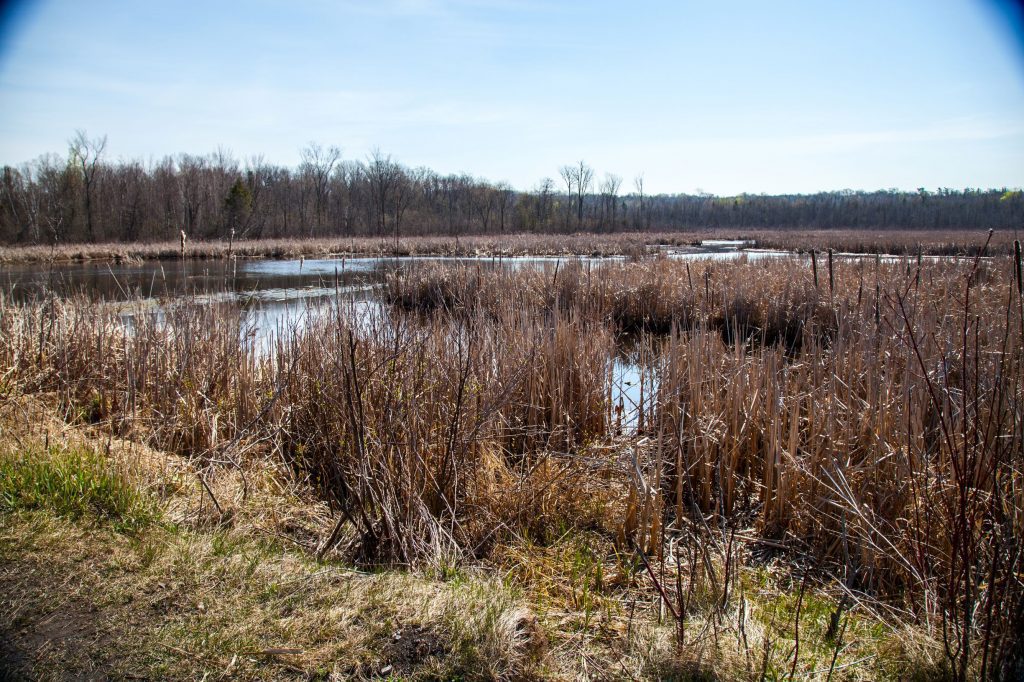 What are the main threats to wetlands?
What are the main threats to wetlands?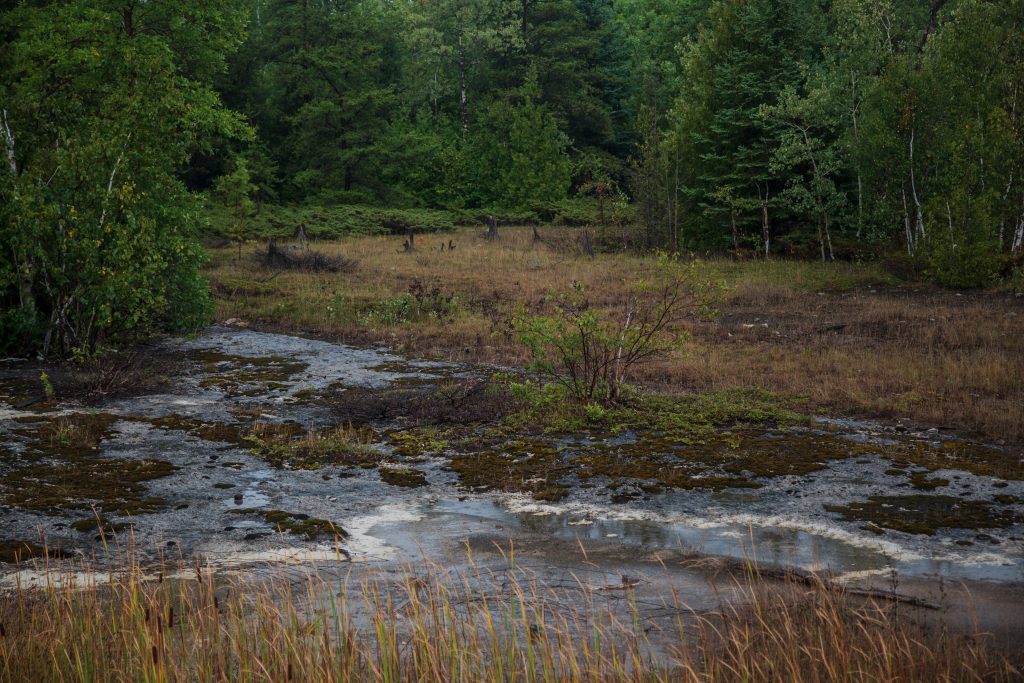 How are wetlands protected?
How are wetlands protected?